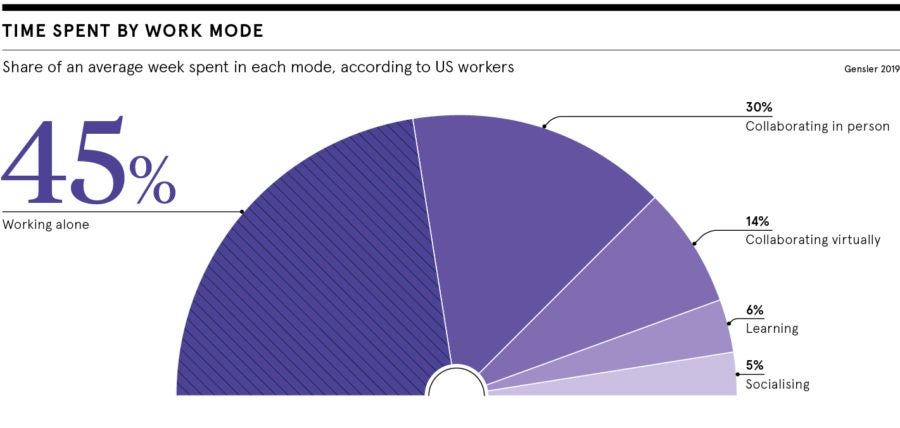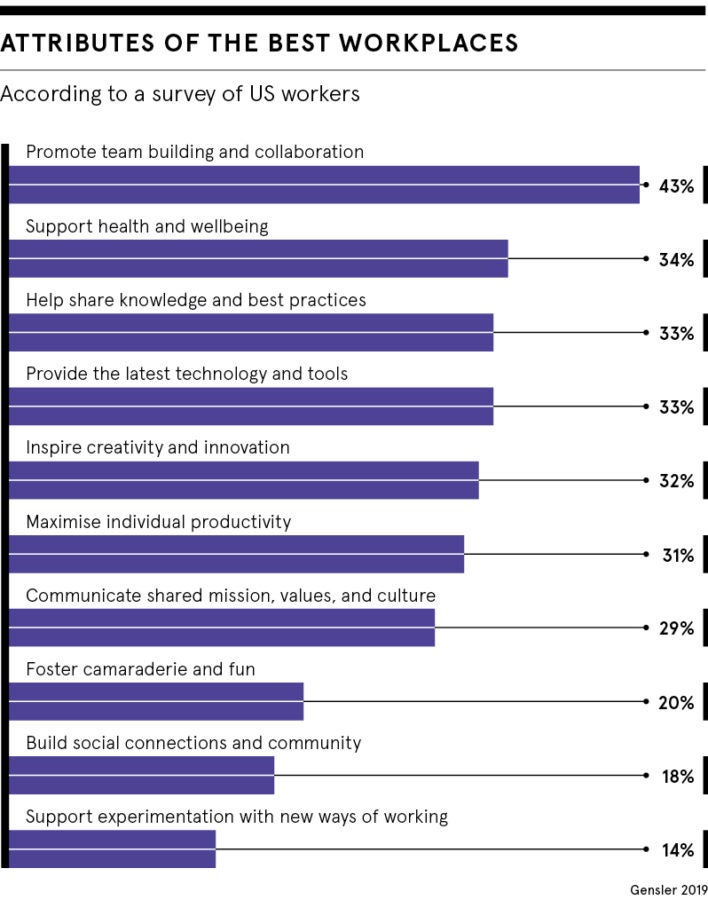Offices up and down the UK are empty, desolate places for the foreseeable future, as the impact of the coronavirus pandemic continues to grip the nation. But even if a government-mandated work-from-home policy wasn’t in place, would they be quieter than they used to be?
With the rise of the modern digital workspace, the answer is likely to be “yes” as the watercooler chatter and face-to-face interaction of workers is replaced with the muted sounds of instant messaging and project management apps.
Technology is clearly redefining how we communicate at work, collaborating on projects through Slack or organising workflows over Asana. However, it appears the ever–growing suite of collaboration tools at our disposal could be masking that we are getting further away from having meaningful interpersonal relationships at work and increasing workplace loneliness.
A study commissioned by Totaljobs and Mind concluded that 60 per cent of employees had experienced isolation at work. That may be hard to fathom given the ultra-connected culture that thrives in most workplaces. But just because technology makes it easier to communicate with colleagues doesn’t mean we feel more connected to them.

The future of workplace technology has consequences for the bottom line too and, as physical workplace interactions dwindle, there appears to be a knock-on effect on productivity. Research from the Smith School of Business at Queen’s University, Kingston, Ontario, Canada, reveals companies whose employees feel isolated experience almost 37 per cent higher absenteeism and 16 per cent lower profitability.
“People who feel lonely become less committed to their organisation,” says Professor Sigal Barsade of The Wharton School, University of Pennsylvania, a US expert in organisational behaviour. “This means they care less and performance suffers as a result.” Isolation also seems to modify personality, so a person becomes less approachable.
“When people are lonely in a particular setting, it leads to a negative cycle of over-vigilance to social threat,” explains Barsade. “As such, rather than reaching out, they withdraw. We saw this in our workplace study where employee loneliness was positively related to being perceived as less affiliative, that is less available for close work bonds and relationships, and this also related to lowered work performance.”
Reimagining office space
As anyone who usually experiences regular morning commutes will testify, the need for presenteeism at a communal work hub remains largely unchanged, regardless of the future of workplace technology. And as long as humans congregate in defined corporate spaces to work, there is an opportunity to encourage staff interaction and tackle workplace loneliness in the office environment.
A striking example is the Bloomberg European HQ in London, which houses 4,000 employees within its one million square feet. “This building is designed to encourage co-operation and collaboration, and that’s what makes for a successful business,” declared Michael Bloomberg on its opening in 2018.
We should use technology as a bridge to human connection instead of letting it be a barrier between us and our teammates
Every one of its six floors is connected by a 1.5-metre-wide stepped ramp, which loops through the full height of the building and is designed and proportioned to allow workers to hold spontaneous conversations with one another, without feeling like they are stopping other people getting by.
Formal meeting rooms are equipped with recessed “voice lift” microphones, so everyone can be heard and on the sixth floor there is the “pantry”, a double-height, staff breakout area. Comfortable booths are located around the building and, although they are equipped with a monitor and keyboard, they serve as an alternative space for informal face-to-face meetings and conversations.
“Humans are social creatures and it’s these in-person conversations that are still relevant and critical to combat workplace loneliness and increase engagement,” says Jenny Maenpaa, a psychotherapist specialising in professional and organisational development.
For new office buildings, such as Bloomberg London, influencing social interaction by baking it into the architecture is clearly one way to encourage these conversations. But it’s more problematic for existing locations, which usually have a stark choice to become more or less open plan.
Recent Harvard Business School research, which studied the interaction of employees before and after their companies redesigned to an open-plan office, found collaboration doesn’t suit the current trend. In fact, the study showed that, as an office becomes more open, usage of email and collaboration apps goes up.
“Rather than prompting increasingly vibrant face-to-face collaboration, open architecture appeared to trigger a natural human response to socially withdraw from officemates and interact instead over email and IM [instant messaging],” says Associate Professor Ethan Bernstein, one of the study’s authors.
Encouraging a sense of belonging
When workplace design can’t shoulder the burden of minimising workplace loneliness, Barsade believes business leaders need to look at the overall culture of an organisation in a bid to keep all the perks digital work tools allow, while encouraging staff interaction.
“Loneliness is not a trait, it’s situational in particular areas of life, like work,” she says. “Given the amount of time people spend at work, leaders must address the issue because it’s an organisational problem.”
While leaders often label loneliness as the worker’s problem, researchers emphasise that C-suites need to make it theirs. For example, if workers feel they’re not being heard or understood, which will only be amplified by the ever-present use of tech, it is a direct result of bad business culture. The key is not to see workplace tech and loneliness as competing forces.

“In the workplace, we should use technology as a bridge to human connection instead of letting it be a barrier between us and our teammates,” argues Dan Schawbel, managing partner of Workplace Intelligence and author of Back to Human. “For instance, the biggest thing that gets in the way of human connection at work is still email, yet a study by Harvard Business Review found that one face-to-face conversation is more successful than 34 emails exchanged back and forth. It’s all about knowing when to employ the technology and not using it as a constant crutch for communication.”
Schawbel has also led a study, in collaboration with Virgin Pulse, determining the most effective ways to enable stronger relationships at work. The survey of 2,000 managers and employees found that offsite meetings were a helpful strategy for reducing feelings of workplace loneliness.
Following these meetings, data revealed that productivity and engagement increased, while feelings of isolation decreased. These events can be organised using email or an app, but then the interpersonal interactivity takes over naturally.
“We can have a better balance between technology and interpersonal communication at work by being more self-aware and thoughtful about how, when and where we use the technology to connect,” Schawbel says.
Our reliance on technology will be tested further in the coming months as employees – working remotely due to coronavirus – slowly return to their offices. Time will tell whether this better balance can ever be achieved.

Reimagining office space
Encouraging a sense of belonging

